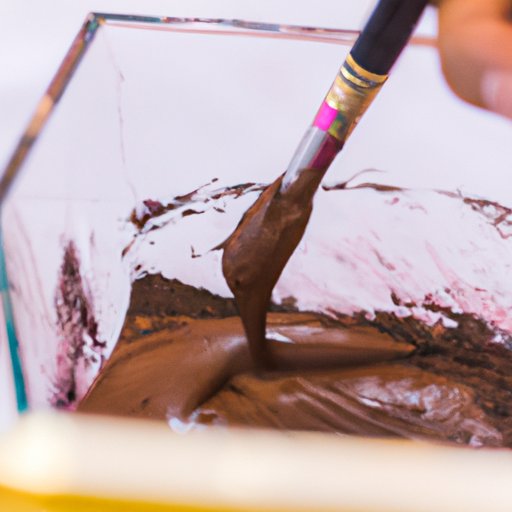Introduction
Are you tired of struggling to make brown paint from primary colors? For many people, mixing the right shades of brown can be a frustrating challenge. But with the right materials and techniques, anyone can create beautiful shades of brown to use in artwork or home decor. In this comprehensive guide, we will provide step-by-step instructions on how to make brown paint from primary colors, as well as discuss different ways to mix colors to achieve varying shades of brown. We will even explore how to make brown paint without using black pigment. By the end of this article, you will be an expert on making brown paint.
Step-by-Step Guide for Making Brown Paint from Primary Colors
Understanding the basics of color theory is essential for making brown paint. Brown is often considered a tertiary color, meaning that it is made by mixing primary colors. The three primary colors are red, yellow, and blue, and these colors can be mixed to create various secondary and tertiary colors.
To make brown paint from primary colors, start by taking small amounts of red, yellow, and blue paint and mixing them together. Adjust the ratio of colors to achieve the desired shade. For example, adding more red will create a warmer brown, while more blue will create a cooler brown. Don’t be afraid to experiment with different ratios until you find the perfect shade.
Different Ways to Mix Colors to Achieve Varying Shades of Brown
There are many ways to mix colors to achieve different shades of brown. Adding white to brown will create a lighter shade, while adding orange or green can create different hues of brown.
For a darker, richer brown, try mixing in complementary colors. Complementary colors are opposite each other on the color wheel and when mixed together, they can create rich, deep colors. For brown, try mixing blue and orange or purple and yellow to create a darker, more complex shade.
Using Complementary Colors to Create a Rich, Deep Brown Hue
To create a deep, rich brown hue, start with a neutral brown base and add complementary colors. For example, mix a brown paint with red and green to create a dark, almost chocolate-colored brown. Mixing blue and orange can create a rich reddish-brown color. Be sure to adjust the ratios of colors until you achieve the desired shade.
Tips for Making Brown Paint from Natural Pigments Found in Nature
If you prefer to use natural pigments, there are many options available. Earth pigments, such as sienna and umber, can be found in nature and are easy to mix into paint. Plant-based pigments, such as beet juice or turmeric, can also be used to create beautiful shades of brown.
To make paint from natural pigments, start by crushing or grinding the pigment into a fine powder. Then mix the powder with a binding agent such as linseed oil or egg yolk. Adjust the consistency of the paint by adding water or more pigment until you achieve the desired consistency.
How to Make Brown Paint Without Using Black
Many artists prefer not to use commercial black pigment in their work. However, achieving a deep, dark brown hue can be challenging without black. One way to create black paint without using black pigment is to mix complementary colors. Another option is to use a dark blue paint to create a deep, almost black-brown shade. Additionally, burnt umber and raw sienna pigments can be used to create dark, earthy brown tones.
Achieving Consistency in Brown Paint Mixtures for Smooth Application
Consistency is key when it comes to paint application. To achieve a smooth application, it’s important to make sure the paint is well-mixed and not too thick or thin. Use a palette knife to mix the paints thoroughly and add small amounts of water or pigment as needed to achieve the desired consistency.
Creative Uses for Homemade Brown Paint in Art Projects and Home Decor
Brown paint is a versatile color that can be used in many art projects and home decor items. Use it to create natural landscapes or to add warmth to furniture and wall hangings. Blending different shades of brown together can create a more dynamic effect in paintings or other artwork.
Conclusion
Making brown paint is a simple process that can be achieved with the right materials and techniques. By following the step-by-step instructions in this guide, you can create beautiful shades of brown to use in your artwork and decor. Don’t be afraid to experiment with different mixing techniques and natural pigments to create unique and personalized shades of brown.
